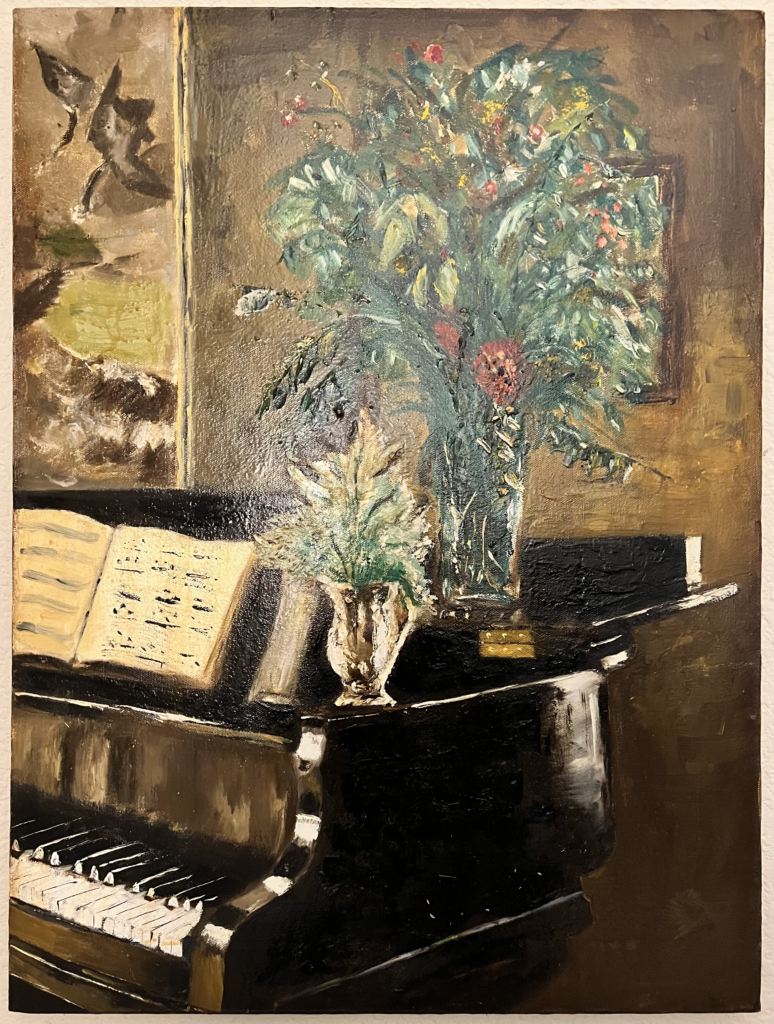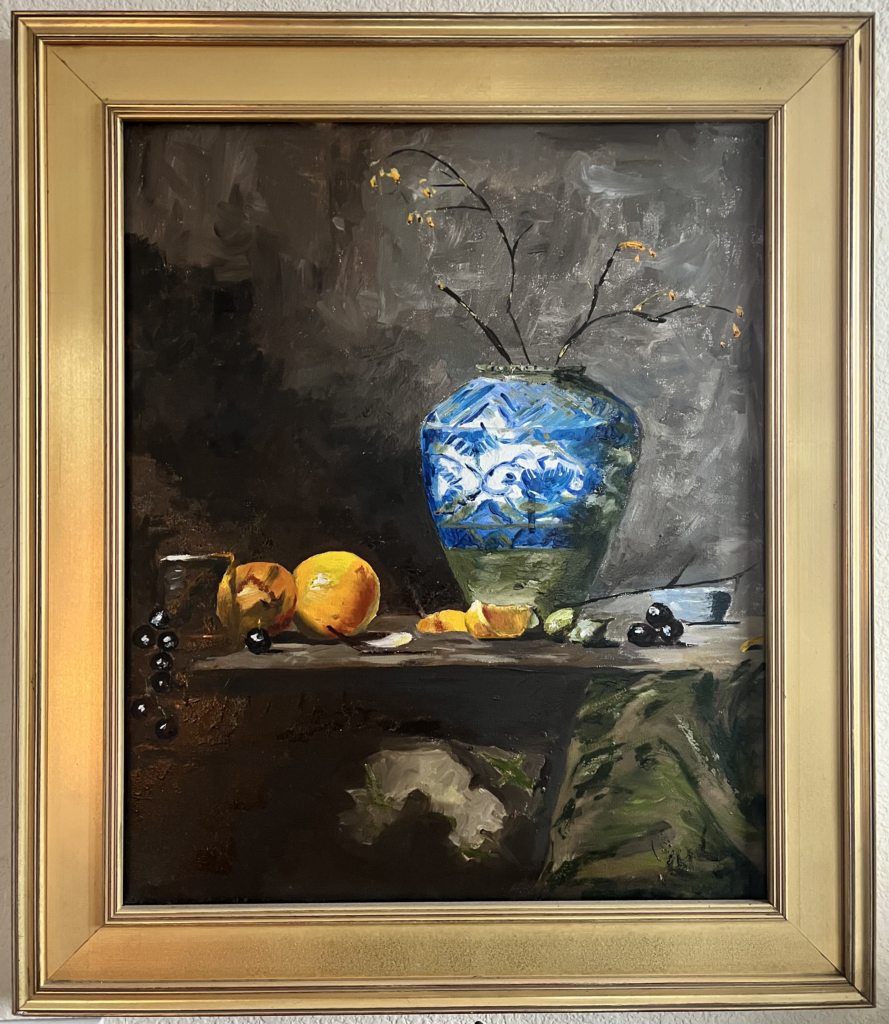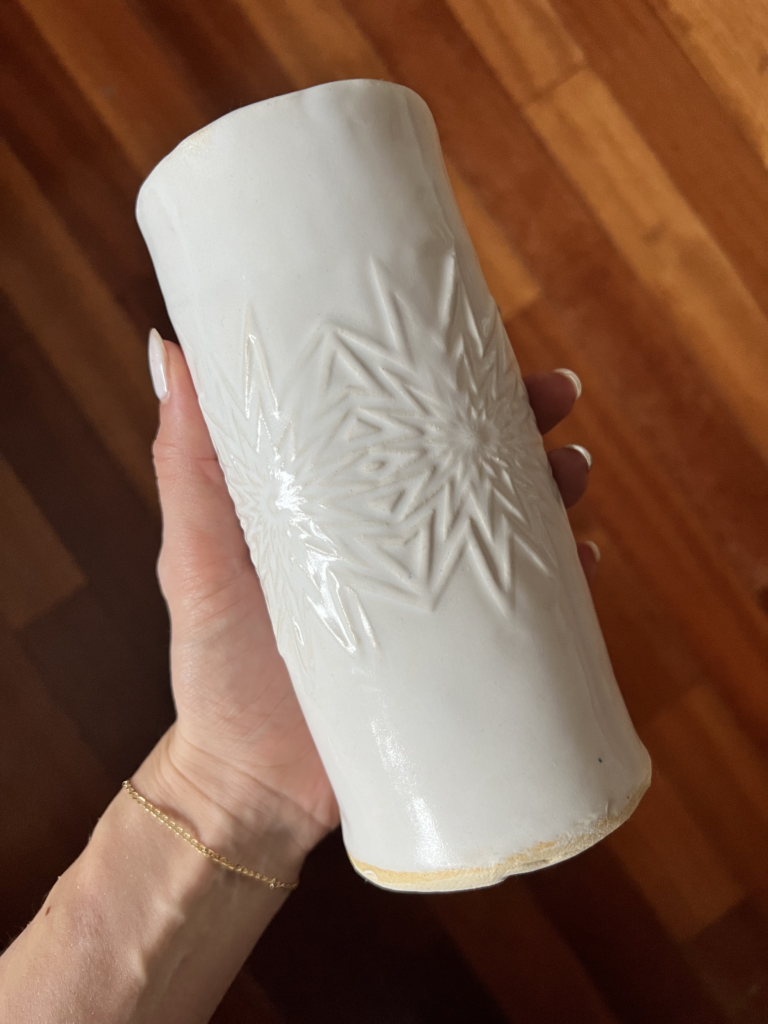Your gain: Discover best practices for going through belongings of loved ones that died to lovingly let go of things you will no longer hold on to, and prioritize what to keep.
I’m going to start this post with something funny my mom used to say, albeit a little dark given my situation. She said, “you can’t take it with you when you die!”.
The thing is, she’s right. So to begin, let’s get that straight and let it sink in.
Sure, we might bury our loved ones in a special outfit. Or perhaps a favorite piece of jewelry, maybe even a photo, a particular possession they enjoyed. That’s an absolutely beautiful gesture. If that feels right to you or aligns with any of your beliefs, I encourage you to do that.
But here’s the thing, unless your loved one was an Egyptian pharaoh or can afford a MASSIVE tomb where all of your belongings from the physical life can accompany you in the afterlife, chances are you just loss someone and now have a whole lot of stuff to sort through. That is not easy, y’all. It’s a burden we take on as those left here in the physical world.
A Hard Burden to Bear
Before we dive into this, I just want to say I truly think this topic falls under the “category” of things you don’t hear enough about grief that can be really difficult to cope with. This is a highly emotionally charged process, and it can be far harder to detach ourselves from these items than people may think—especially if they’ve never had to go through this before.
I’d love for you to check out my two-part post series about 8 Things You Don’t Hear About Grief if you’re dealing with some complexities of this grieving process. I promise it’s worth a read!
Sentimentality & Attachment to Belongings
Material possessions are tricky when a loved one dies because there can be so much sentiment attached to them. Which I love, because that shows so much love and care went into that person’s life or that item. The (difficult) thing we need to remember is that possessions are just that. They’re things.
If You Had 60 Seconds
If you’ve ever seen the movie Leap Year with Amy Adams and Matthew Goode (a favorite of my parents and I), there’s a scene where they’re walking up a hill to a stunning old castle in Ireland. Declan (Matthew Goode’s character) asks Anna (Amy Adams) if her house was on fire and she only had 60 seconds to grab one thing, what she would take with her. She didn’t give much of a response—little bit of materialism going on here—but answered his own question by saying he would take his mother’s Claddagh ring.
I watched that movie again fairly soon after my parents passed, which was very cathartic. But it also spoke to me.
The Condo and Its Contents
My parents owned a condo my husband and I now live in. But before we officially moved in, I was constantly at the condo checking on it and constantly surrounded by all of my parents’ things.
So, as one could imagine, that’s a lot of memories and an insane amount of energy from loved ones that have died bombarding you at once. It’s hard, no doubt. In fact, it even affected my sleep because it was so overwhelming and I was so haunted by everything.
It’s something I’ve grown used to now, and we’ve really begun to make the condo “ours” by changing some of the decor, etc. But that did NOT happen overnight. It happened over many, many months. It was a process, and it was one only I could go through as the only child of Greg and Lori Jordan. I was the ultimate decision maker on getting rid of their belongings.
I want to interject here by saying that my situation could be very different from yours, or someone you know going through this. Perhaps you don’t have a lot of time. Maybe there are multiple siblings involved in your situation. My goal with this post is to simply give you tools and guidance on how to begin moving through your loved ones belongings.
Guys, this is not an easy process, I want to acknowledge that. Don’t for a second feel like your inability to get rid of something, even if it’s the most mundane thing, is problematic or silly. Even if others are telling you otherwise.
If you’re under the gun to move things out or need to purge, what I’m about to share will hopefully move that process along and help you find some peace in the interim.
The Phases of Moving Through Belongings
What I’ve come to realize is there’s almost three “phases” in moving through belongings. At least the following was true for me:
- Phase one: items you know you can release now and feel okay about it.
- Phase two: items you aren’t ready to part with yet, but will probably be okay releasing later on.
- Phase three: items you simply can never part with.
Allow yourself to move through these phases naturally as much as you can. I know there might be outside forces here. Maybe you need to sell a house and can’t move everything into storage, other family members are involved–whatever it is. I encourage you to speak up about how you’re feeling and your grieving process the best you can. If you need time, make it known.
Tips for Going Through Belongings
Tip 1: Take inventory
This might feel a bit overwhelming, but it’s important. Even if it’s not an “official” inventory of sorts, at least get a gauge of how much is in front of you. If it’s a lot, don’t immediately go to a place of stress or anxiety. It’ll all get worked through with time, don’t you worry! Take it literally one item at a time. One room at a time. More on this below.
Tip 2: Break it out into manageable sections
This is how best not to lose your mind if you’re dealing with a lot. Do yourself a favor and break it out into more manageable sections or rooms. Or, spend a day or two just tackling clothes and other wardrobe items. Then maybe a few hours sorting holiday decorations, that junk drawer the whole family dreads. Books, bathroom toiletries (my mom had SO many). Whatever it is, separate these into categories or sections that are easier to digest emotionally.
Tip 3: Take it one item at a time
Yes, this could take a while depending on how much you have to go through. When my grandma passed away (my dad’s mother), my aunt told me years later how stressful it was and how there was so much stuff to work through. She had siblings to lean on her and there, but as someone who’s an only child like me, that process can be exponentially more taxing.
Not trying to have a pity party here, by the way… just saying, it’s a lot of pressure. If you’re going through that, I empathize. Then again, multiple opinions from others on what to do with certain items can be stressful, too.
Bottom line, it’s never easy no matter the circumstances. The key is to breathe, be present with the item.
Questions to ask yourself:
- Does it spark joy? Is it something that lights you up?
- Is it something that might be tough to part with, but you could live without?
- Do you have a safe place to store it or room for it in your current home or dwelling?
- If your loved one were here, would they be okay parting with it? Really think about this one, too. Don’t just assume it’s a no because you’re feeling your attachment to it.
- If it was no longer with you, would it bring you pain to be without?
- How often would you look at/use/enjoy this item if you kept it?
- Does it bring you comfort?
Tip 4: Lovingly Release It
I’ve talked about Marie Kondo in other journal pieces as well, but there’s something she does that’s so beautiful when getting rid of something. Even if it’s a little painful but you know you have to, or you know it’s best, show it gratitude.
Thank the item for the joy it brings you. Thank it for the joy or comfort or warmth it brought your loved one. Have a moment with it, and let it go. I swear, after a while it really does make you feel better about having to move these belongings along to a different place.
An Example of the Process
I’ve had to do this countless times in multiple rounds, mostly with clothing items. It was impossible to keep all of my parents’ clothes and shoes. One of the hardest parts about letting some of it go, though, was because it still smelled like them. It made it feel like they were still here. I realized I couldn’t keep all 30 of my dad’s Old Navy shirts, though, and he wouldn’t want me to.
So, in order to get through their closets, I went piece by piece and thought about each one. I asked my parents for guidance and to weigh in, too. It might sound weird, I know. But if I got an internal feeling of happiness and it sparked joy, I kept it.
If it was something I know they’d be okay with letting go of if they were here in the physical world, or it was just a very basic item without a lot of meaning, I released it. And, I donate. Donating makes me feel joyful about giving to others who otherwise wouldn’t have these comfy clothes otherwise that are still good quality.
Some people find it super weird and uncomfortable to donate clothes or belongings of their deceased loved ones, I totally get it. Don’t do anything you’re not comfortable with, it’ll only make it harder. For me, it was a better fate for these clothes and shoes than the garbage. To each their own! Wherever they go, make sure you’re comfortable with it.
Give It Time
I also want to note that I did this over time. Again, if you don’t have time, just do your best to work through the steps I laid out above. But don’t force it if you can avoid it. There were clothes or shoes I absolutely was not ready to get rid of a year ago, but every so often I go through them again and I realize and understand it’s okay to let it go with love. It’s all about the process and timing. You’ll know when it feels right.
Worst case scenario, if you can, rent a storage unit for a little if you’re feeling under the gun but are simply not ready to let go yet. For me, I did this but eventually got so tired of paying for it (my bank account was NOT happy) that I had to be real with myself and realize these items I was so desperately holding on to just weren’t necessary to keep. Or, if I felt they were, I made a point to find a place or them in the condo.
Belongings You’re Holding On To
In my organization after their passing, there are items (clothing, jewelry or otherwise) I know there’s no way in heck I’m ever getting rid of. Mom’s wedding ring (most if not all of my mom’s jewelry, really), and dad’s wedding ring, my dad’s paintings. My dad was an extraordinarily talented painter and sketch artist—a couple of his pieces are below! I’m so proud of it, honestly. His art is still all over our walls.


I mention the jewelry and art, specifically, because they’re things they touched or created, and their energy is all around and in them. Sure, they “touched” and picked out each item in the condo, but these are different, in my mind. Whether it’s sentimentality or because of their value, they’re not even up for debate in terms of releasing them.
The Clay Vase
This clay vase my mom made when we did a pottery class together just months before she died. It was one of the last things we went out and did together just her and I. The day that she passed away—I don’t know why or how it came over me—as I was on my way home from the city she died in I had a random thought to go to the pottery studio to see if they had it. I was so desperate, honestly. It had been at least a couple of months or more since we were there, and after a while they got rid of unclaimed pieces. I thought it was a long shot, but had to try.
By some grace of whatever powers that be, it was there sitting on the shelf. Like it was waiting for me. I picked it up, took it to my car, held it with gratitude and disbelief that it was in my hands, and cried my eyes out. It now sits on our kitchen counter, and everyday I’m incredibly thankful to have it.
The list of things that I still want to keep goes on. It’s a lot, I’ll be the first to admit it.
Consider The Belongings in Front of You
Here’s the catch to keeping all of that—and think about this in your own situation and how it could apply. When John and I moved into the condo and officially made it ours, there was simply no place to keep everything. It has taken months and months to find places for things and pack them up safely if they’re not on display.
It’s arduous. Emotional. Stressful. Especially if others are involved. I’m very grateful John has never once pressured me to move anything out, or get rid of anything before I was ready. Not one thing. But we’ve definitely had frank conversations about it and what should/shouldn’t go and sometimes that’s hard to hear, though I know I needed to.
Be Realistic and Be Honest
My biggest piece of advice: be realistic and be honest with yourself. What makes sense to keep? What can you actually keep and maintain the integrity of the item? Is there anything that would break your heart even more to lose?
For example, clearly I’m never getting rid of my dad’s paintings unless they go to a friend or family member who would cherish them as much as I do. They’re something he created, something he touched. I’m insanely lucky to have them. Those trump any piece of clothing he had, really.
Is it realistic to keep them ALL in the house when we’re trying to make this place feel like “ours”? Short answer, no. I know my dad wouldn’t want me to feel pressured to do that, either. For the ones I can’t hang, I’ve found a safe space in storage where I can visit them if I need to.
Remember: There’s More to Life Than “Belongings”
One very emotional thing I’ve had people tell me over and over again is that I’m such a product of my parents. I am them. I’m their DNA. I’m the thing they were most proud of. I always get choked up when I think about that.
What I’m about to say makes me feel a little funny and self-important, but I know it to be true after a lot of reflection and others nailing it into my psyche. So, I now say it with confidence: I am what they cared about most. If the house was ablaze, belongings would be left behind and we would have each other. That’s it.
Moments, experiences, memories, and the relationships with our fellow humans trump all, guys. If you’re struggling with the tangible items, always remember that. Remember that you can’t take any of this stuff with you to the other side. Having an attachment to something special is more than okay. Just look at those phases I noted above and be honest about where an item falls within them.
My 60 Seconds
If you happen to be curious what I’d grab if my 60 seconds ever came… well, a necklace I have with my parents’ ashes in it (along with my 19-year-old dog who was the sister I never had).
Their wedding rings, my all-time favorite painting my dad did, that vase my mom made that I mentioned earlier, and a couple of old photos of them and the three of us.
You can only grab so much, right? And I might not even be able to take all of that. But when you start to think about it that way, the items you can (eventually) do without will fall away more and more and you’ll be left with what means the most.
What would you take with you? Let me know in the comments or DM me on Instagram!
Get Your Freebie From Me!
I have THREE free tools you can take advantage of if you’re ready to step up your grief work. I’m so, so excited to share these with you. My Gratitude in Grief Journal Prompt, From Grief to Grinning Toolkit, and A Practice in Presence Toolkit are ready and waiting for you to download, all you have to do is click here or the button below.

View comments
+ Leave a comment